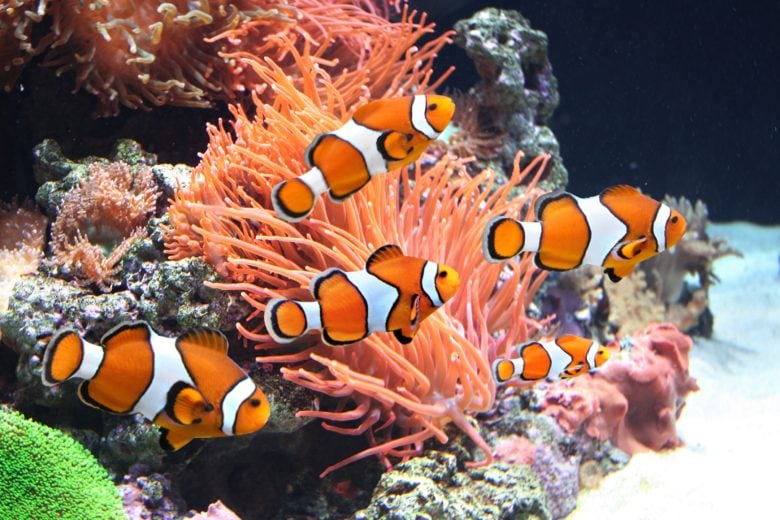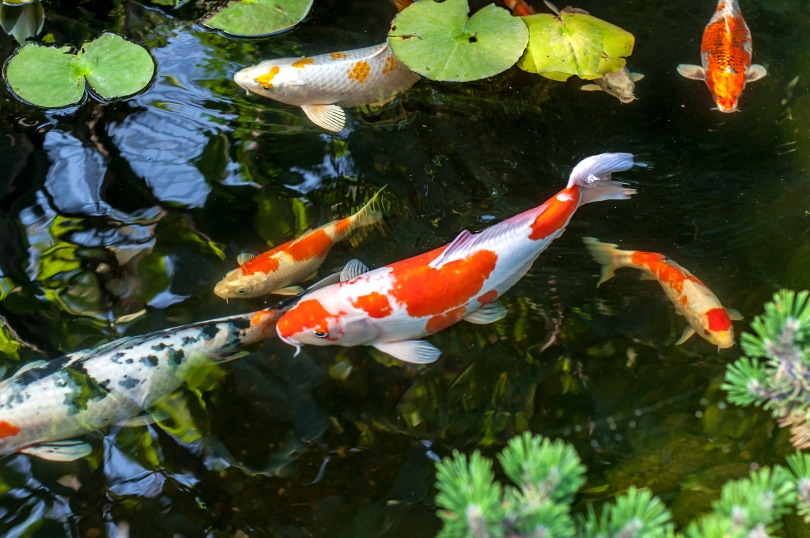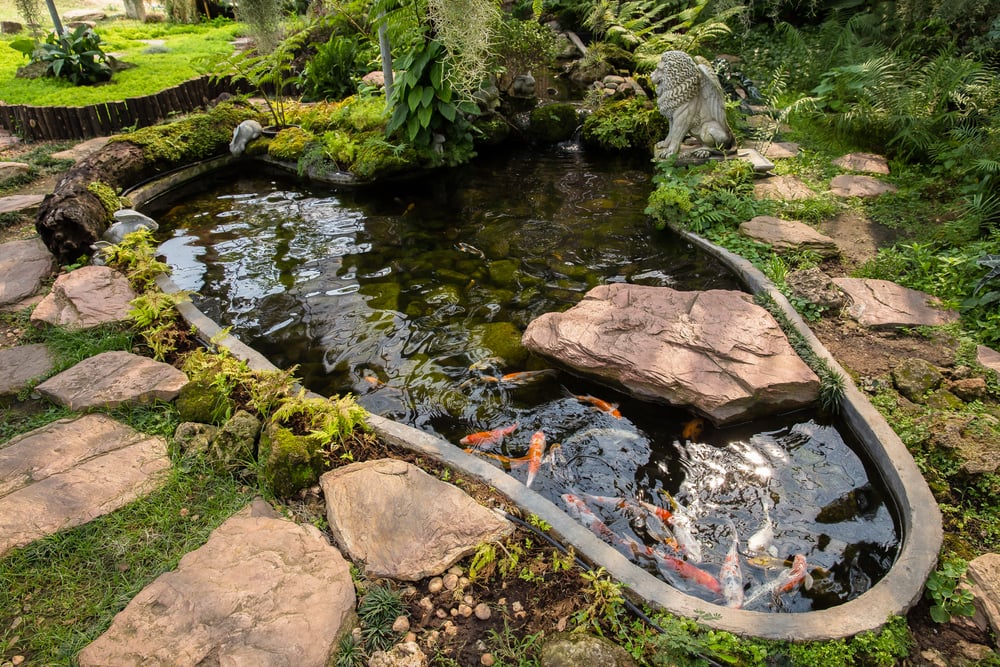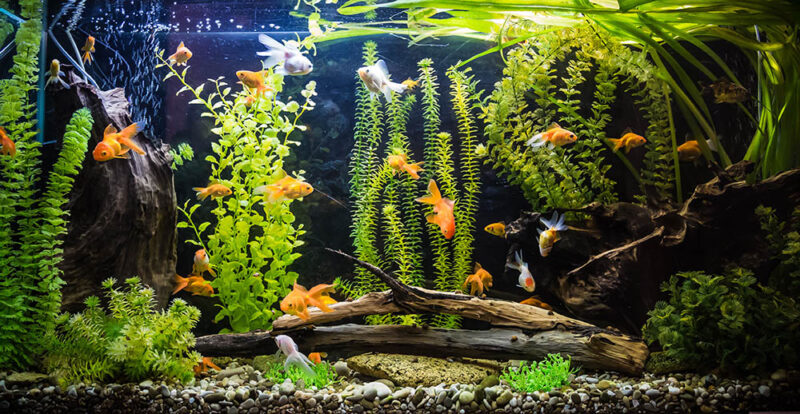
Click to Skip Ahead
The symbiotic relationship between the clownfish and sea anemone is fascinating. These two creatures couldn’t be more different, yet they play a vital part in each other’s survival and protection.
These two common seawater species help each other by providing shelter and food without harming one another. In the end, both species benefit from this symbiotic relationship, all of which we will explain in this article.
Symbiotic Relationships in Nature Explained
Both biologists and ecologists have defined a symbiotic relationship as an interaction between two or more species, which could be beneficial or not. There are symbiotic relationships between various organisms all around the world in each ecological community. Most symbiotic relationships help the species to evolve and thrive in cases like the relationship between sea anemones and clownfish.
Discovering the different types of symbiotic relationships can help you understand how this relationship can benefit the different organisms, whether it only benefits one or both.
 The 3 Types of Symbiotic Relationships
The 3 Types of Symbiotic Relationships
There are three basic types of symbiotic relationships that you will observe in nature along with different subgroups, such as:
1. Mutualism
This is when both organisms will benefit from the interaction, which makes it mutually beneficial. The organisms will rely on one another for survival, usually for nutrition or protection. A great example of an organism that uses mutualistic symbiosis is the clownfish and sea anemone, or the oxpecker and cattle.
Mutualism is divided into either obligate or facultative mutualism. In obligate mutualism, the interaction is necessary for each organism’s survival, whereas in facultative mutualism, the interaction is merely beneficial, and both organisms can still survive without each other.

2. Commensalism
In commensalism, only one organism will benefit from the relationship while the other is not harmed by the interaction. Some of the organisms will depend on the other one for shelter, nutrition, or even transport such as the golden jackal which will follow larger predators around to finish off any uneaten prey. There are different subtypes of commensalism, such as metabiosis where hermit crabs will use shells as a home, even though the shell does not benefit from the interaction.
3. Parasitism
This type of symbiotic relationship occurs when one organism lives off another. The organism (usually a parasite) depends on the other organism for survival. This common type of symbiosis is seen in creatures such as ticks, fleas, and parasitic worms that will infect a host that they live in and feed from.
The Symbiotic Relationship Between Clownfish and Sea Anemones
Now that you have an understanding of the different types of symbiotic relationships and how they work, you will notice that clownfish and sea anemones have a mutually symbiotic relationship. This is because both organisms benefit from each other.
The type of mutualism they are categorized into is known as facultative mutualism because even though the sea anemone and clownfish both benefit from interaction, it is not necessary for their survival. Both species can survive without each other, but they make life easier for one another.
Sea anemones and clownfish work together in a facultative symbiotic relationship by providing each other with food and shelter. The sea anemone provides a place for the clownfish to reproduce, feed, find shelter, and spawn.
The sea anemone benefits from the clownfish because, with their colorful orange and white bodies, they attract larger or smaller fish that the sea anemone can eat. The clownfish also helps to keep the sea anemone clean and oxygenate the tentacles as the clownfish swims through them.

Mutualism in Sea Anemones and Clownfish
The mutualistic relationship between the clownfish and sea anemone is interesting because sea anemones sting fish, which is how they catch their food. However, the clownfish generates a protective layer of mucus that makes them immune to the sting of anemones.
Clownfish live in around 10 of the 1,000 species of anemones in the ocean, which they turn into their homes. The anemones also help ward off other predatory fish that might harm the clownfish because they will be stung by the sea anemones’ tentacles.
This is a great example of mutualism in a symbiotic relationship between two organisms that benefit from the interaction, both the clownfish and sea anemone seem to have equal benefits from each other to thrive.
It is common to mistake the symbiotic relationship between these two organisms as commensalism because it’s widely believed that only the clownfish benefits from the relationship, but here is a comparison table to show you how both species benefit from each other.
| Clownfish Benefits: | Sea Anemones Benefits: |
| They shelter within the tentacles of the anemones, which protect against predators | They get oxygenation by increased water movement from the clownfish. |
| A safe place to reproduce and spawn is in the sea anemone. | The clownfish attracts food for the sea anemone. |
| Some of the food that the sea anemone does not eat is left for the clownfish to eat. | The increased oxygen helps improve the anemone’s metabolism, increasing respiration and growth. |
| Clownfish will occasionally eat prey fish originally attracted to the anemone. | Clownfish will chase away fish that try to eat the anemone. |
Do Sea Anemones Harm Clownfish?
Sea anemones have tentacles that they use to sting. These contain a potent venom that paralyzes the fish and enables the anemone to move the fish to its mouth part. However, clownfish are born with a thick mucous coating that makes them “immune” and protects them from the sea anemones’ venom. This enables the clownfish to live within a sea anemone without being harmed.

Can Clownfish Live Without an Anemone?
Clownfish can live without sea anemones, but they thrive better when they are together in symbiosis. The sea anemone also doesn’t need a clownfish for survival, but the two make a good team by offering each other shelter, protection, and food.
Certain species of sea anemones can eat clownfish, which is why clownfish only inhabit specific species of sea anemones. Some clownfish species do not live in sea anemones and instead survive by hiding among corals in reefs, so the two organisms do not always rely on each other for survival.
Conclusion
Clownfish and sea anemones share an interesting symbiotic relationship that is mutualistic because both organisms benefit from each other. There are various forms of symbiotic relationships that we can observe in nature, in which different species live in close interaction for the benefit of one or both—sometimes they even rely on each other for survival.
The mutualistic relationship between sea anemones and clownfish is one of the most fascinating and popular aquatic symbiotic relationships that enable us to have a better understanding of the way different organisms live together.
Featured Image Credit: Lukiyanova Natalia Frenta, Shutterstock










